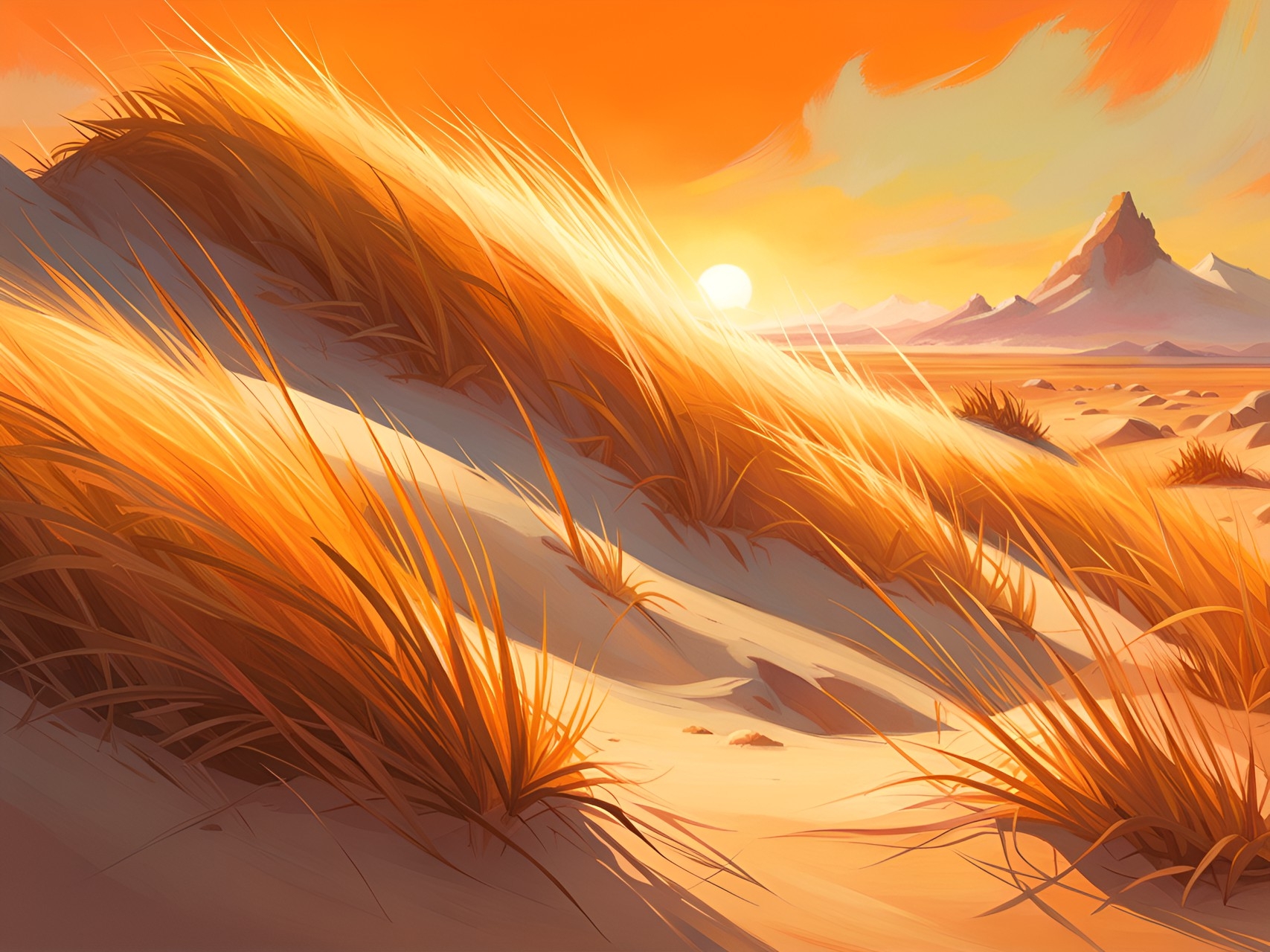Mashe Lovegrass
One of three species of grass common to northern Alkelbulan, desert trails and shrublands are littered by their sunny blades. Mashe is one of several variants of lovegrass, the Kaithur of these grasses differing by region but all of them have a Charge Manifestation matching the aspect of their environment. Mashe Lovegrass is native to Shamsi and draws its power from Rithaldis. Mashe can absorb the harsh sunlight and radiation of Shamsi, storing up dangerous amounts of energy to endure long droughts or to protect themselves with.
Anything that carelessly tries to eat Mashe are in for a nasty surprise, each blade of grass transforming into harshly radioactive photons or even solar plasma when touched! This is harmless and in fact desirable to specific herbivores like the Shamsi Camel or Raqs Gazelle which disperse it's seeds. But to any unwanted grazers, Mashe blades leave a nasty burn and even radiation poisoning! Despite this, there are tribes of Toubou and Imaziɣen who are immune to Rithaldis magic. They use this grass to make baskets, brooms, hats, ropes, and candles, and it is used for food, as a charm, and in funeral rituals. Where most peoples are careful not to touch or even approach Mashe, these xeric nomads even tell a tale of a man who wove a radiant sword out of this grass!
|
Rithaldis' Charge
With Rithaldis' Charge, mashe lovegrass can store up radiant energy inside their bodies without limit and cannot be harmed by it, whether it is ionizing radiation, strong sunlight or solar plasma. They can convert this into magic energy, bolster their own growth or re-release the stored energy as a solar Aura. However, unlike most forms of magic they cannot produce anything on their own, dependant on an outside source. |
Anatomy |
Lovegrass has a strong, fibrous root system that can reach 13 feet in depth and 9.8 feet in width. It has long, narrow leaves which are very tough and cannot be broken easily, growing in dense tufts. A waxy coating helps protect its blades and retain moisture in its arid habitats. The drooping leaves grow up to 2 ft long (65 cm) and a few millimeters wide.
|
Habitat |
Strong sunlight is essential to this variant of lovegrass, only found in the Shamsi Desert, Birit Narim and Kemet! Aside from strong sunlight, mashe lovegrass is incredibly hardy and versatile. Growing in tenacious, fire resistant and drought resistant bunches, they can tolerate a range of soils and habitats. Some of these include roadsides, trampled grasslands, light woodlands, mountainous slopes, arid shrublands, riversides, regs, ergs, hamadas, salt marshes and coastlines.
|
Life Cycle |
Lovegrass produce seed through apomixis, self fertilization. When conditions are right, this can happen within the first year of life. It blooms from December to May and usually flowers in its first year. Mashe lovegrass panicles can produce 300 to 1,000 seeds per season. These are propagated by animals like the Raqs Gazelle, seeds attaching to fur and hooves. They can even germinate after being digested!
Seeds germinate best when it is warm, seeds are on the soils surface and after two consecutive days of moisture. It grows in well drained sandy or clay loam soils but does not tolerate standing water. Mashe develops a thick root network as it matures, some roots as deep as 13 ft, and can grow five centimeters per day. It is the first root to grow into the soil from a seedling which can host up to 60 smaller roots. Closely packed stems protect Mashe from cold temperatures, droughts and even wildfire--so long as only its blades burn, Mashe will sprout again quickly! |









Comments